
In the middle of the 12th century, the Almoravid empire that controls al-Andalus is practically dismembered. The emir Ali ibn Yusuf, faced with the push of the Christian kings of Aragon, of Castile, and supported by the crusaders of Pope Innocent II, decides to focus his efforts on North Africa. In short, it was there where he had his worst enemy, the Almohads. The latter, willing to recover the territory lost by Islam in the Iberian Peninsula, crossed the strait in the year 1146. One of their first places to conquer Sherish, as the Muslims called the city that we know today as Jerez de la Frontera.
The Almohads.
In the year 1106 at the age of 26, Ibn Tumart, begins a journey through the Islamic world. The first place he landed was Córdoba, without a doubt one of the most important centers of knowledge of the time, after being instructed in the doctrine of Ibn Hanz he went, as a good Muslim, to Mecca, and finally to Baghdad. Twelve years later he was ready to return, in his satchel a new theory for Islam. As soon as he returned he began to preach about a return to the purest Islam, he accused the Almoravids of being polytheists and atheists, calling on the faithful to oppose them.
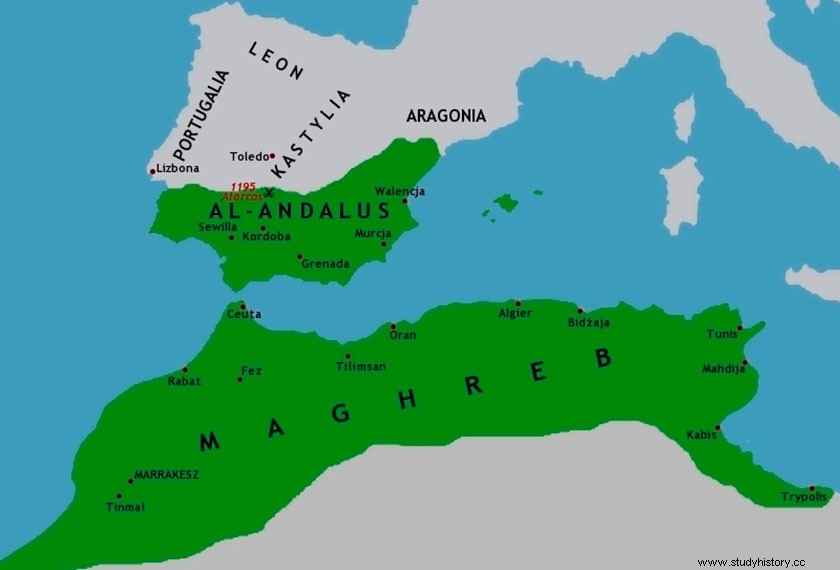
To hide from the Almoravids he founded a ribat in the Atlas Mountains, from there he organized this new community, half religious, half military. Several hill tribes will join the new leader of Islam in the Maghreb, according to him, a descendant of Mohammed himself. Soon his followers will begin to arrive in the cities, his mission to spread the new doctrines of Ibn Tumart and in the process control compliance with the doctrines of the Koran.
Abd al-Mu'min was the necessary military leader the cause needed. This was none other than launching the Jihad against the infidel, in this case the Almoravid Empire. Despite the death of the religious leader, together with the first failure of not being able to conquer the Almoravid capital in 1130, the process was irreversible. As has been said, in 1146 they arrived on the Peninsula, one of the first places to surrender was Jerez de la Frontera. Finally a year later, the capital Marrakesh falls under Almohad rule, thus Abd al-Mumin becomes the first Almohad caliph of al-Andalus.
The Almohads in Jerez.
Although this period is considered quite dark in terms of sources, what is evident is the strong Islamization of the city of Jerez. At least 18 mosques existed in the city a century later when the Christians arrived. By the way, of all of them, only the one in the Alcázar de Jerez has been maintained, for this we have to thank Alfonso X el Sabio, who converted it to the Christian cult.
Although the capital of al-Andalus will fall to Seville, Jerez de la Frontera was the capital of the Cora de Sidonia and one of the most important cities in the south of the peninsula. It should be noted that it became one of the educational centers for muladíes, thanks to the construction of several Koranic schools. It seems that the caliph himself addressed Sherish, with the nickname of "the first believers", not in vain as we have said it was one of the first places in the peninsula to accept the imposition of the new Almohad Caliphate.
Its position halfway between the Strait of Gibraltar and the capital Seville, seems to be the reason for becoming one of the military posts that the Almohad caliphs had. The city of Jerez, which was completely walled, was one of the main recruitment centers to relaunch the Jihad in al-Andalus. Although it will be in the mandate of Yúsuf I, the educated Caliph, friend of Averrores, who lived in Seville and projected the construction of the Giralda. It has also been recorded that he passed through the Alcázar of Jerez de la Frontera, the usual place for some of his meetings.
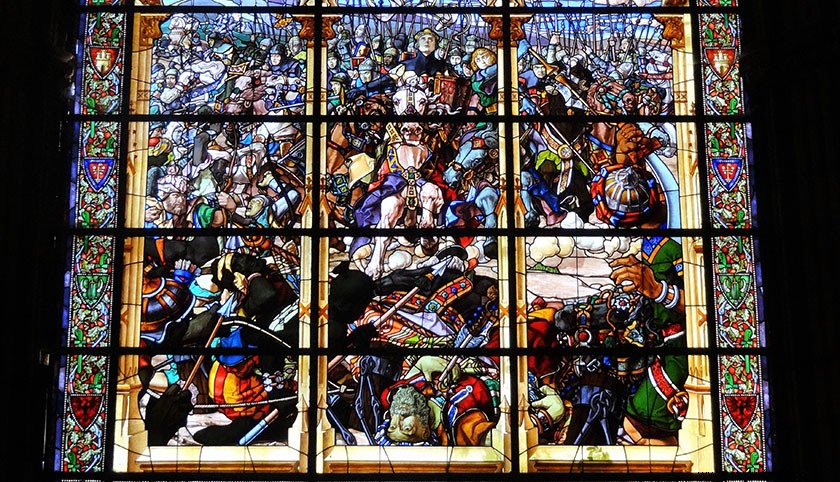
Detail of the window of the Royal Collegiate Church of Roncesvalles, where the Battle of Navas de Tolosa can be seen
The history of the Almohads in al-Andalus is a history of victories such as that of the Battle of Alarcos, where the Caliph Al-mansur defeated the King of Castile Alfonso VIII to stop the reconquest, "the conquest for others". But also of defeats such as the Battle of Navas de Tolosa in the year 1212, where his successor, the Caliph Muhammad an-Násir, fell defeated before the coalition formed by the four Christian kingdoms of the Iberian Peninsula, see Castilla, Aragón , Navarre and Portugal. The latter was the beginning of the inexorable fall of the Almohad Empire in Al-andalus.
Despite the fall of Córdoba in 1236 and that of the capital Seville in 1248, Jerez de la Frontera continued under Arab rule until that day of October 9, 1264. That One day after five months of siege by the Castilian troops, Alfonso X the Wise entered the Alcázar of Jerez de la Frontera to convert it from that moment into a Christian. It seems that while Alfonso X entered the city through the Rota gate, through the gate on the other side, the Royal Gate, each and every one of its inhabitants left the city, some on their way to Granada, and the others north of Granada. Africa. After which the Castilian king ordered the repopulation of Jerez de la Frontera.
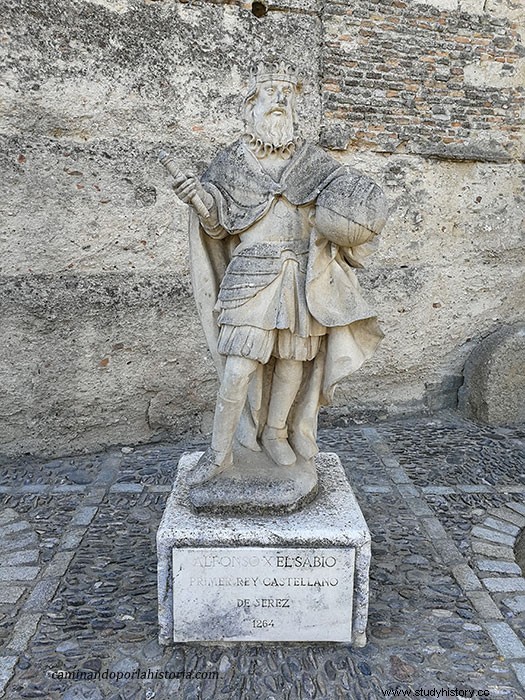
Alfonso X in the Alcazar of Jerez de la Frontera
Fortunately for us, before being expelled from the Peninsula, the Almohads left their mark on art, since thanks to them we can enjoy a Giralda, and a Torre del Gold in Seville, and of our protagonist today the Alcázar of Jerez de la Frontera.
The Alcazar of Jerez de la Frontera.
Four centuries after the arrival of Alfonso X, the Villavicencio family takes ownership of the old Arab Alcázar. Starting in the 18th century, construction began on some of the buildings that can be visited today. The Palacio de Villavicencio is highly recommended from this period, where there are some museum spaces, such as a 19th-century pharmacy, and a Camera Obscura from where the entire city can be seen.
But if what interests us is the Almohad period, the building will not disappoint us. One of the first places we can visit is the original door of the Alcázar During the aforementioned 12th-13th centuries, we will see the typical curved entrance for defensive reasons and also topped with a horseshoe arch.
Right next door we will find the perfectly restored Mosque previously referred. In addition, with all its elements, from a small minaret from where prayer was called, to an anteroom or previous patio, where purification was carried out through a fountain before entering, also called Ablution. After which he went to the prayer room, with the quibla and the mihrab that points the direction of Mecca. Due to its small size, it must have been a private area of the Sherish wadi.
After crossing the medieval Patio de Armas, and the gardens, which despite maintaining the original Almohad structure have been restored, we will arrive at an area where archaeological work is still being carried out. In it, the oldest remains of the Alcázar have been found, dating from the 10th century, that is, in the first Caliphate period. Next to them there are some from the Almohad era in question, such as some cisterns and waterwheels for water extraction, and a bread oven .
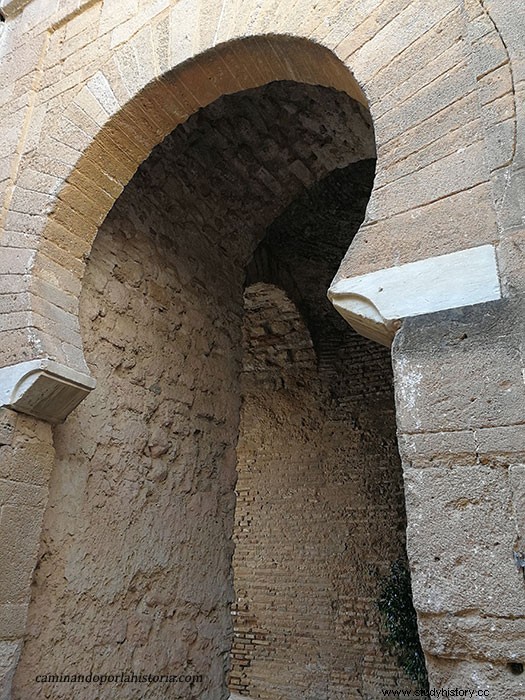
Entrance gate from the Medina
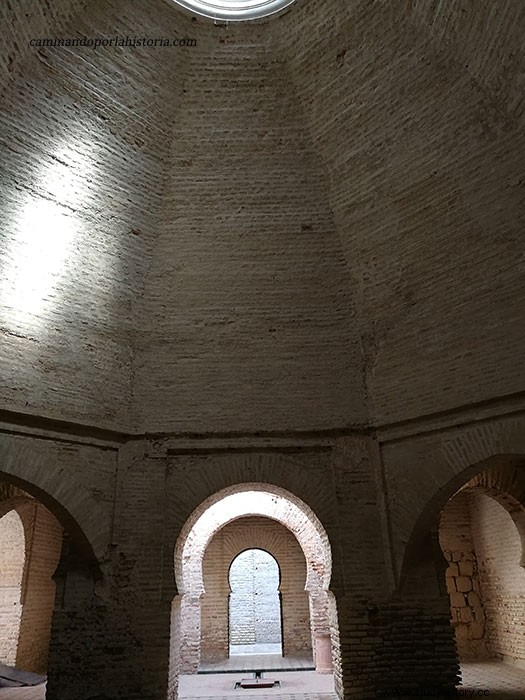
Mosque
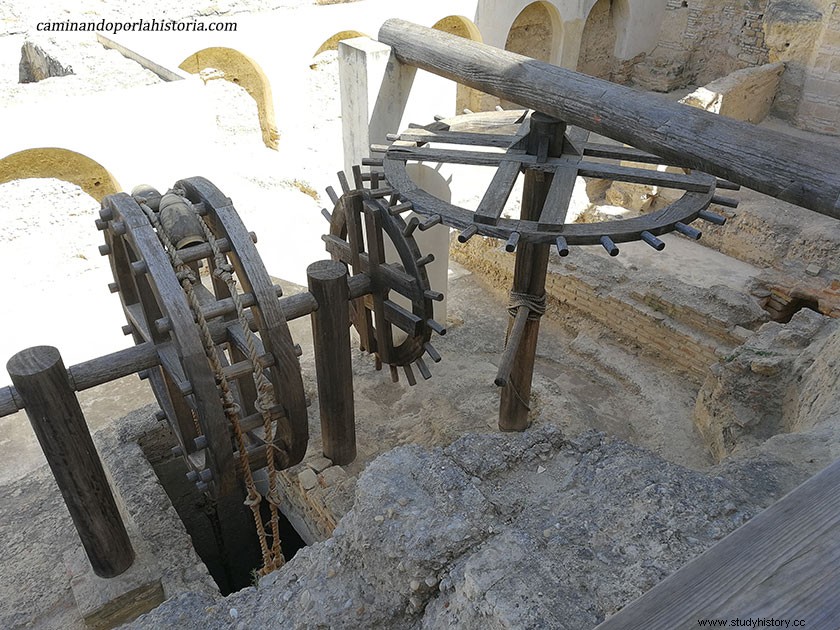
Recreation of the water extraction wheels
The next destination of the visit is without a doubt the most beautiful of it. The Arab baths , also for the exclusive use of the Alcázar, which in addition to the three usual areas of cold, warm and hot water, had a ceiling with star-shaped holes, without a doubt they would offer a unique space. In the Arab world, baths were a special place, surely this ceiling with stars reminded them of desert nights. At this point we applaud the restorers of the Alcázar, since they saw fit to value the discovery of some remains of the original ceiling, to show it to us in this very special way.
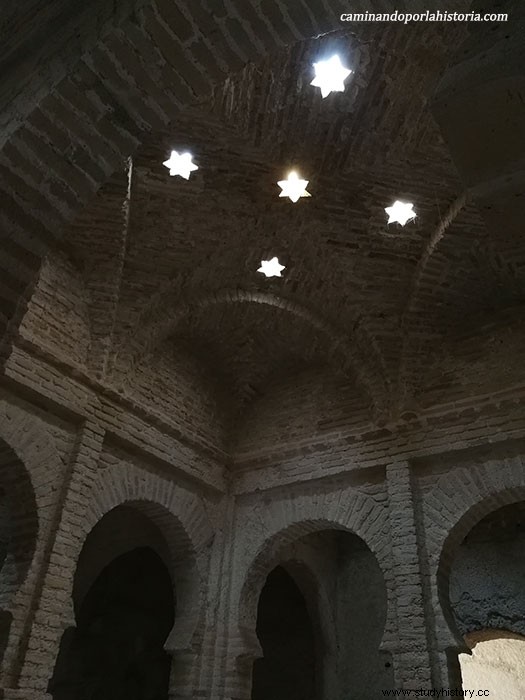
Arab Baths
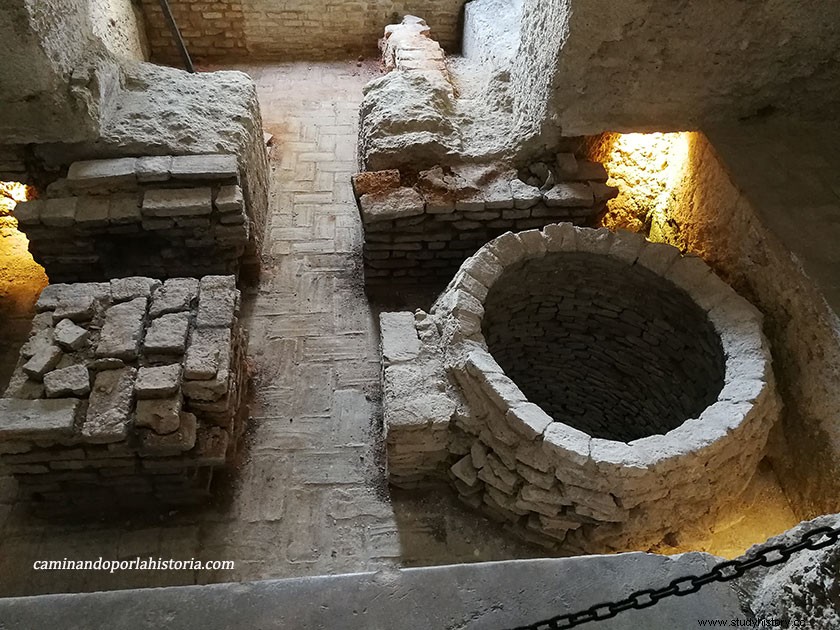
Furnaces for heating the water of the Arab Baths
Not far from these bathrooms, we will find the only place in the whole complex that served as a residence. It is a quadrangular room that must have served as a meeting place or protocol, on each of the sides a door that led to small private rooms. Although today it is called the Royal Pavilion, there is little chance that this would have been its function, at least in the Almohad world.
Finally, we will visit the two towers that remain from the Almohad period. The first with a square floor plan, called Torre de la Puerta del Campo , which was precisely its function, since it served to protect one of the entrances to the Alcázar. And on the other hand, the orthogonal plant tower , with its 21 meters high, it served to control the territory, its views are the best in the entire complex.

Paso de Ronda and in the background the Octagonal Tower
If you liked this story, you can take a look at this other one:
More info:
History of Islamic Spain, W. Montgomery Watt, 1965
History of Jerez de la Frontera, José Luis Repetto Betes, 1987
